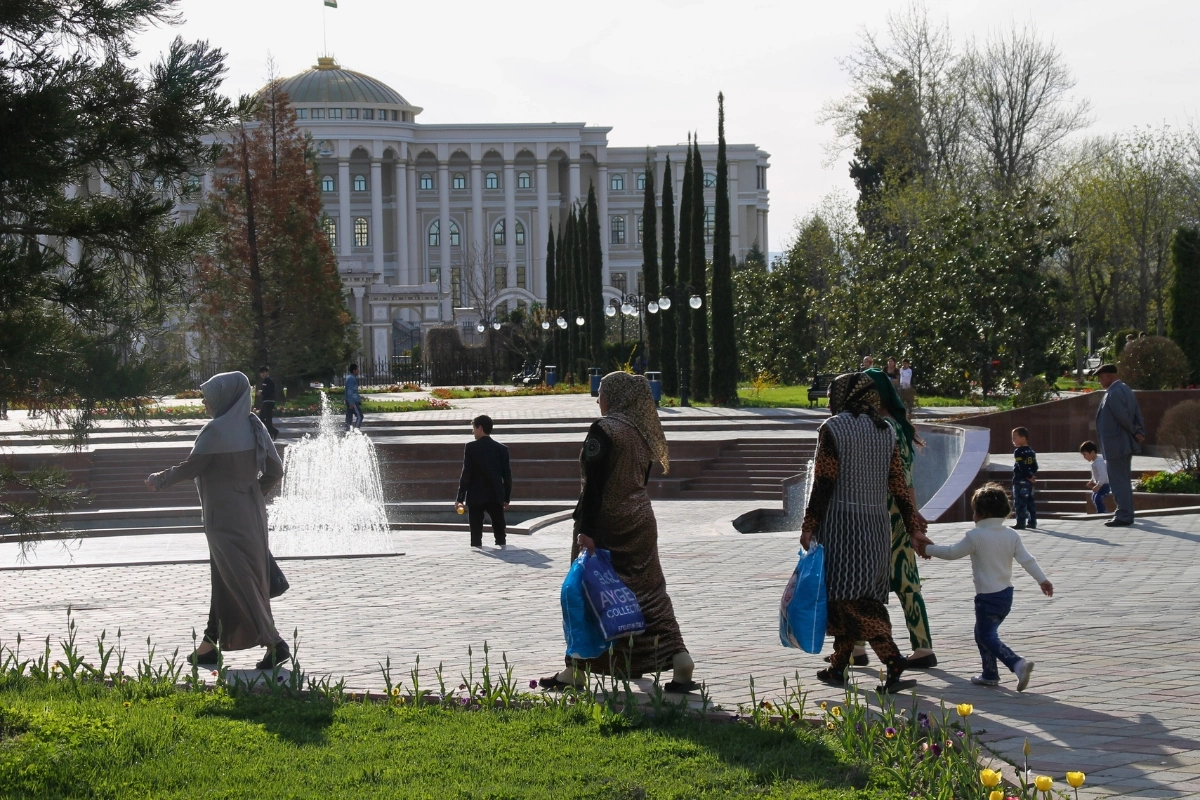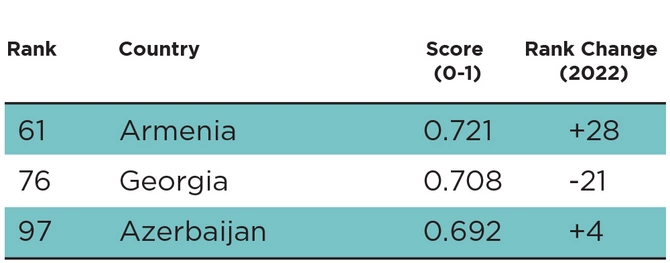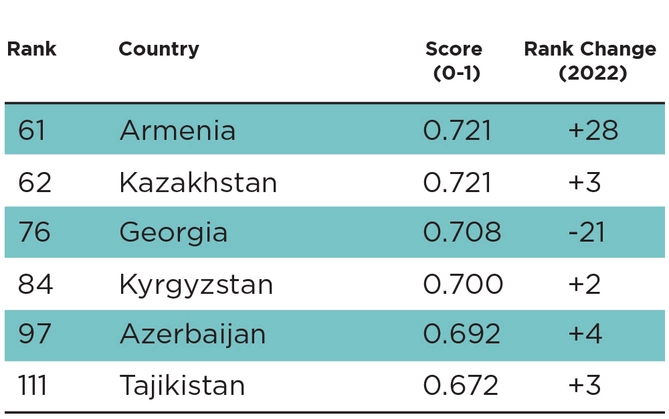
South Caucasian and Central Asian gender equality in numbers
Dushanbe, the capital city of Tajikistan. Image: Omri Eliyahu/Shutterstock
The gender pay gap remains an ongoing issue around the world that requires constant attention and improvement. According to the European Commission, in 2023, the pay gap in the EU remains at 13 percent, with women making 87 cents for every euro a man makes.
When it comes to post-Soviet countries—that are usually put in the same category due to similar circumstances affecting their progress—it generally is not as pronounced as in other developing countries, which can be noticed in the rankings comparing the global pay gap. Yet within the post-Soviet countries, the South Caucasus and Central Asia are two regions that remain closer than their Eastern European or Baltic counterparts. Although the Soviet Union’s crimes against humanity, especially against its smaller ‘satellites,’ are regarded as the main reasons for its eventual failure and crash, there are some benefits that they brought: education and gender equality.
This is especially noticeable when comparing Central Asian countries before and after the USSR. Traditional and conservative communities were transformed into more modern, open-minded, and liberal ones. Allowing women to work instead of being stay-at-home mothers and giving children opportunities to become educated instead of herding sheep are nonetheless the positive outcomes of the regime’s tyranny.
However, despite the shared past, each country has its unique present. Let us take a closer look at the numbers in South Caucasus and Central Asia to see where they stand in the plight of gender inequality.

Source: World Economic Forum
When it comes to the three South Caucasus countries, the leading one with the smallest gender pay gap in the Global Gender Gap Report 2023 by the World Economic Forum is Armenia, with 61st place. Compared to last year’s report, where it was just 89th. Unlike its neighbour, Georgia went from 55th place in 2022 to 76th in this year’s rating. Azerbaijan remains the South Caucasus country with the highest gender pay gap, with it increasing from 101st place to 97th this year. Although the progress is going rather slow in Azerbaijan, it is still surprisingly higher than such EU member states as Hungary (99) and the Czech Republic (101).
The reason for Azerbaijan scoring so low can be explained by the country’s stagnant perception of what professions women can choose. The government removed the legal barriers only in November 2022, allowing women to work in spheres that used to be prohibited due to the potential health risk. Still, it will take time for ‘soft’ barriers to lessen as well. Moreover, Azerbaijan has a lot to work on, as the World Bank reports that its pay gap (35.2 percent) is one of the highest in Europe and Central Asia.
From Georgia losing its leadership among the South Caucasian countries and Armenia skyrocketing their results, we can see that the gender pay gap never stays the same and requires constant work for its development. In Georgia, for example, men receive more bonuses than women, Eurasianet reports. In addition to that, it is reported that statistically, female-dominated spheres, like education and social assistance, have lower wages, which results in a lack of motivation for women to continue working when faced with the choice of whether to continue working or to take care of family instead.
In Armenia, according to UN Women, the wage gap previously was due to women spending fewer hours working than men due to unpaid domestic labour and caring for the sick and children. However, as was shown in the latest report by the World Economic Forum, the South Caucasus’ smallest country was able to climb to the top among other former Soviet countries, with an almost equal percentage of representation in decision-making positions, such as business, administration, and law (female: 49.80; male: 50.20). However, there is still an overwhelming majority of women in perceived female-dominated spheres in the South Caucasus, such as education (female: 74.51; male: 25.49) and arts and humanities (female: 82.48; male: 17.52).

Source: World Economic Forum
Out of the five Central Asian countries, only three were presented in the Global Gender Gap Report this year. The country with the smallest gender pay gap is Kazakhstan, which is 62nd on the list, coming right after Armenia (61). Kazakhstan’s rank shift this year is not as drastic as it was last year, when the country went to 65th place, compared to 2021 when it was only 80th on the list. The two other Central Asian countries on the list are Kyrgyzstan (84) and Tajikistan (111).
Although Uzbekistan and Turkmenistan were not presented in the report, Uzbekistan was one of the countries in the World Bank’s Listening to Central Asia surveys, from which we can analyze its societal progress and compare it to that of its three other neighbours—Kazakhstan, Kyrgyzstan, and Tajikistan. According to the World Bank, women earn about 61 percent of what men earn in Uzbekistan. While improving the pay gap between existing working men and women would lift “more than 700,000 people out of poverty.” Although the wages between genders differ in the country more than in Kazakhstan and Kyrgyzstan—the leading Central Asian results—the respondents’ answers are not that far off. For example, 77 percent of respondents in Uzbekistan believe that women should spend less time working to dedicate time to home tasks, compared to 73 percent in Kyrgyzstan and 74 percent in Kazakhstan, while in Tajikistan it was 80 percent. When asked if women should earn less than men to sustain peace in the family, numbers were more positive—only 20 percent agreed in Kazakhstan, 34 percent in Uzbekistan, and 42 percent in Kyrgyzstan. However, in Tajikistan, 51 percent of respondents agreed with the statement.
Unfortunately, no recent data is available for Turkmenistan, as the country is known to be closed off from foreigners, making it hard to compare it to its Central Asian neighbours.

Source: World Economic Forum
Although these countries have different results from one another, the reason behind these results is the same everywhere. Those are either societal norms of what are perceived to be women-oriented careers or the combination of unpaid care, domestic work, and the ‘motherhood penalty’ phenomenon.
Equal and transparent wages are essential not only for women’s rights but also for a country’s economy. However, as was seen in the South Caucasian and Central Asian current standings, a lot of the pay gap in the region has to do with the conservative and outdated perceptions of women as homemakers and caregivers or being subjected to low-skill work despite their education, skillset, and qualifications.
Share on social media